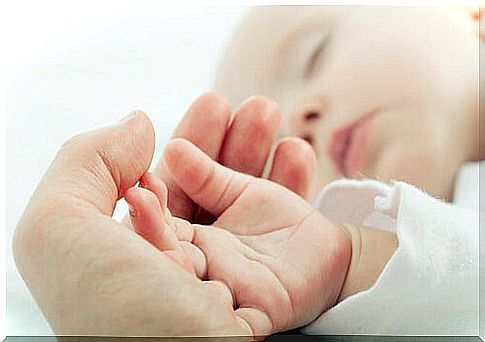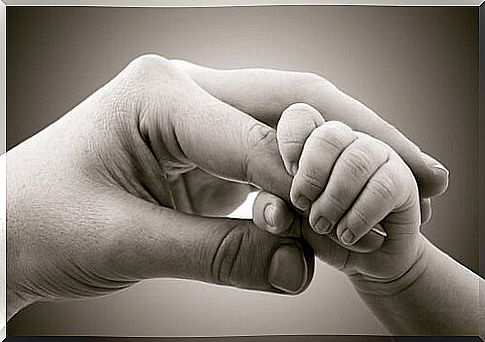According To A Study Storks Bring Babies

Perhaps when reading the title of this article you have been surprised and think that what I am going to write next is meaningless. We all know perfectly well that babies do not come into the world after a long journey piloted by storks, but rather that they come as a result of the union of an egg and a sperm. This is true, but a study that states that storks bring babies from Paris is also true.
Yes, as you are reading it, there is a scientific study, or so it pretends to be, that is able to conclude that babies and storks are closely related. But, even knowing that this is impossible, how is it that someone has obtained results in an investigation to be able to affirm such madness?
Because not everything we read, even if it bears the adjective “scientific”, really is. Especially when a single investigation is proving something so revolutionary. But these are the headlines that sell and in what way they are true, in the following lines we explain why.

Storks and the birth rate
When a person performs different statistical studies there is a rule that he must always keep in mind: that is, it does not imply a cause-effect relationship. More simply explained, two things can be related or vary together without either being the cause of the other.
Continuing with the study of storks, the greater the number of inhabitants, the greater the tall buildings for the stork nesting, and therefore, the greater number of storks and also the births of babies because there is a greater population. But both things are not directly related: the birth rate has nothing to do with this nice animal, although with a superficial statistical analysis we can come to think that they are related.
You will think that perhaps this is an anecdotal study and that you don’t normally read such crazy headlines on the news. But that’s where you go wrong. There are thousands of examples every day that mistake correlation for causation. Since eating chocolate increases intelligence because the latest Nobel Prizes show it, regardless of the fact that in Switzerland it is a traditional food, to tell you that if you eat apples you can get cancer, because in a study that result came out and they did not take into account other variables.
This is another problem, many studies take for granted the influence of a variable on the result without taking into account all the other variables that may be contaminating this influence. This is how we arrive at what are known as spurious correlations. Spurious correlations or spurious relationships occur when two variables that do not have a causal relationship can lead someone to think that they do.
That is, spurious correlations are a mathematical relationship in which two events have no logical connection, although it can be implied that they do due to a third factor not yet considered, called “confounding factor” or “hidden variable”. An example would be to affirm that, in the students of the Spanish schools, the higher the stature, the greater knowledge of the political situation. This may be so, but the hidden variable of age also has something to do with it, don’t you think?

How to know if a study has sufficient validity?
For all this, when you read that lettuce has been shown to prevent cancer or coffee is drunk by people with greater intelligence, think that behind this association there may be a distorted interpretation of the statistical calculations, thus giving rise to totally strange conclusions. . But then how do you know if what I read is true? In short, how do you know if the study that any article talks about has sufficient validity?
So that they do not deceive us or try to sell us products based on misleading headlines and disguised as scientific research, it is advisable to be very attentive to everything you read. You can also guide yourself with these questions:
- Could the study be interpreted in such a way as to reach different conclusions? If so, causality cannot apply.
- Are there any methodological deficiencies in the study that must be taken into account when drawing conclusions? For example, talking about the fact that women who drink coffee for breakfast are smarter and not including men to show that it does not happen to them, or not including women who have something else for breakfast -as a control group- to show that it is indeed coffee and not just having breakfast.
- Can the study results be applied to other groups? If you say that storks bring babies, does this happen only in big cities or also in rural populations? With this question the study of storks would have lost validity.
- How does this work fit into the set of research carried out on the subject in question over time? If we suddenly read that a study shows that bacon does not raise cholesterol, when throughout life various studies have suggested otherwise, at the very least, we suspect.
- Was the study adequately designed to achieve its purpose? Since taking into account the age of the sample for the conclusion or its gender, such as randomization and control of variables is very important. We can observe this in the study methodology.
- Who finances the study? Perhaps this is the most important question. It is necessary to ensure that the study is not partial, that is, for example, that it does not talk about the benefits of yogurts and is sponsored by a brand of that product.
Don’t let them fool you into a fool with tabloid headlines. Don’t let them play with your health or habits by using correlations as causalities or spurious relationships as authentic mathematical relationships. Be smart about what you read and question it; think that the knowledge you acquire, assimilating this procedure as usual, will be of a higher quality.









